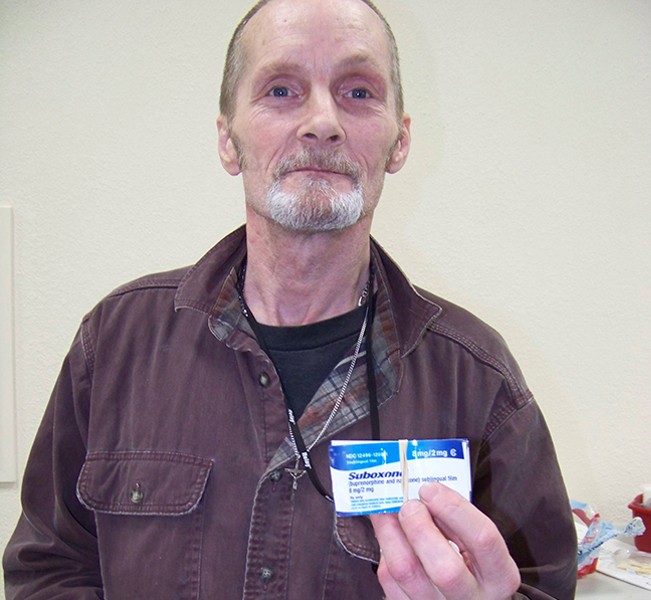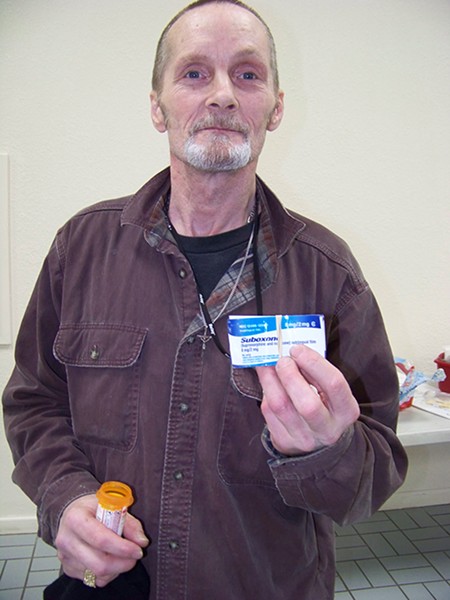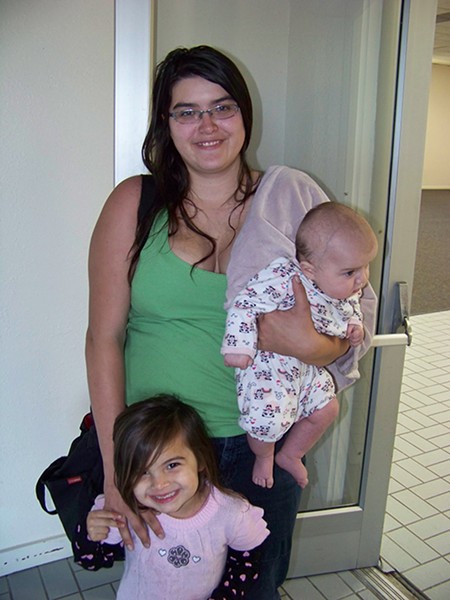In the dark days following the brutal New Year's morning slaying of St. Bernard's Pastor Eric Freed, in Eureka, rumor circulated that the alleged murderer might have been meth-crazed. And membership in a new Facebook group, the Humboldt Meth Abuse Awareness Project, exploded.
The night shift emergency room nurse who started the project, Beth Weissbart, said she did so at the urging of friends. They'd been reading posts for more than a year on her personal Facebook page about meth-related horrors she'd seen on the job — violent and paranoid behavior, heart failure and more. She invited folks to the new group's open page, and it spread by word of mouth. Then some of them wrote letters to the media, inviting people to join the group and attend a Jan. 23 meeting. One letter writer, hospice and palliative medicine doctor Michael Fratkin, wrote, "The death of Father Eric Freed, and the countless acts of violence that occur every day, should be enough to get the public inspired to take action."
By the day of the meeting, the 3-week-old group had more than 1,500 members. And they were not just concerned medical professionals, grieving parishioners, friends and neighbors. They were social workers, politicians, parents, cops and recovering addicts. Amid this growing online community emerged the semi-disjointed but sweet, frank voice of one Jack ("Jacky") Lee Brown, a self-described four-years-clean former addict who sometimes signs off with "later never goodbye."
Brown's pre-meeting posts revealed he's rooting for the Broncos in the Super Bowl; that he's still doing pee tests, but "no worry"; that he can get a little lonely and depressed — isn't sure why his brain won't be happy — but, even so, glad for another "awesome day"; that he'd had cancer; that he keeps fish and cats and has a hungry horde of "strays ... afraid of the day" until he feeds them in the early mornings; and that he was looking forward to the meeting on the 23rd. One day he posted a photo of himself at 31 — looking like an overgrown kid, with shiny-blond hair and a tentative, goofy smile — next to a photo of himself today — looking much older than 51, gaunt-faced with close-cropped gray hair and beard, but a direct gaze. He wondered, in a Jan. 19 post, "are we conected (sic) with life after meth???"
Nearly 300 people packed into the Redwood Turf Club at Redwood Acres Fairground on the afternoon of Jan. 23. They split into 10 working groups — community-alliance building, perinatal mother-infant, prevention, teen outreach, treatment, legislation, enforcement/policing, parenting support, housing and public awareness.
Some groups — like the one on housing, which Brown joined — had a handful of participants seated quietly at a table.
Other groups bulged — in particular the one on law enforcement. A crowd clustered around Eureka Police Chief Andrew Mills, Arcata Police Chief Tom Chapman and other law types, and swapped ideas, frustrations and questions. What do we do about known meth houses? What do we know about the distribution networks of meth? How do we gather the data to assess the magnitude of the situation — data spread scattershot throughout the community in hospital admission records, social workers' notes, arrest records, private company's pee-test records and so on? How can we deal with addicts? Can't we keep people in jail at least until sunrise? (Freed's alleged murderer had been let out of jail in the middle of the night.) Can we get tougher on the dealers?
When the working groups massed together again, their energy was palpable. Each group's leader rattled off wish- and to-do lists. The crowd cheered when Chad Kemp, with the Raven Project, said the county has "a complete absence of mental health support services" for youth with unresolved trauma and mental health issues. And it cheered again when Arcata House Director Karen "Fox" Olson said there'd be no progress "until this community identifies marijuana as a huge driving force" behind meth abuse in Humboldt.
In the lobby, with the spillover-crowd craning to hear the speakers, Brown stood back a ways talking to a reporter. Though he has a home now and works as a prep cook at St. Vincent de Paul's free meal program, he's been homeless. He said he joined the group to show other addicts that recovery is possible, and to share with the other members what it's like to be a meth addict.
"Meth addicts are not in a sound mental state," he said. The first day of a fresh hit, "you're awake — you know, busy, busy, busy. You're cleaning everything, you're taking care of your house. You feel alive. Then comes sleep deprivation. You stay up three or four days, you start hallucinating. ... At one point I thought God was telling me to take care of the evil people."
A side effect, he said, was the sensation of bugs under his skin.
"I literally made a special pair of tweezers to grab hold of the bugs," he said. "You end up with a pile of skin on the table, and you keep pushing the pile together because you think the bugs are getting away."
Brown, who grew up in Oroville, said he started smoking weed with his dad when he was 6 years old. At 9 he was into speed, at 11 it was cocaine, and much later he got into meth. He said he has chronic pain from an accident in which he broke his neck. "I got off meth by going on heroin," he said. "Then I got off heroin by going on Suboxone."
He fished a bottle of the prescription out of a pocket and held it up. "It's been a miracle," he said. As the meeting broke up, a man walked up to Brown and said he really hopes he stays involved in the group. "We need you," he said.
While police and public officials warn of other drug problems locally — noting the high rates of heroin overdoses — Fratkin says none concern him more than meth.
"It is so unique in its devastating consequences, in its effects on people's judgment and, frankly, in the corrosion of their souls," he said. "Methamphetamine is a perfect hack of the mesolimbic dopamine system in the brain. In other words, you get a huge release of dopamine immediately — which translates into an experience of energy, pleasure, grandiosity and altered judgment. And once you start using the drug regularly, that system down-regulates its response. It becomes numb to normal pleasurable experiences that give a person a sense of well-being, confidence, pleasure. It alters the brain's chemistry. Even after they stop, it is years before recovery of normal response."
Since the meeting, the group's Facebook membership has grown past 1,600. Weissbart said some of the energy probably will dissipate, but she's sure that the "strong-willed leaders" who've come forward will carry the momentum.
It won't be an easy task, says Humboldt's chief probation officer, Bill Damiano.
"We've had these [kinds of] meetings several times over the years, since the mid-'90s," he said. Public outreach follows, there's excitement. But then the realization hits that there's "too much data to collect and too many barriers to sharing it."
Still, there's always room for better coordination, he said. "And every time we go out and educate people, it does help," he said.
Meanwhile, the new community group remains vigorous. The working groups' members are swapping info and forming offshoot online sites. Professionals near and far, even out of state, are offering their research expertise. There's talk of turning the main group into a nonprofit. Member Stephen Smith created a website for the main group, www.hmaap.org. And Brown, the former addict four-years clean now, continues to connect. Some days, he's afraid. Others, chatty. The day right after the big meeting, he posted on the site, in all caps, "BY THE WAY MY NEW MOTTO IS I AM (SLINGING HOPE NOT DOPE.)"



Comments
Showing 1-1 of 1